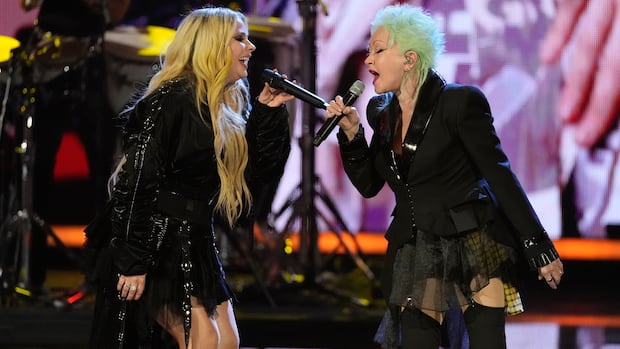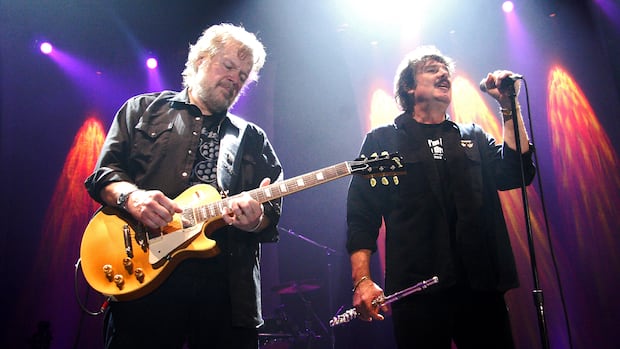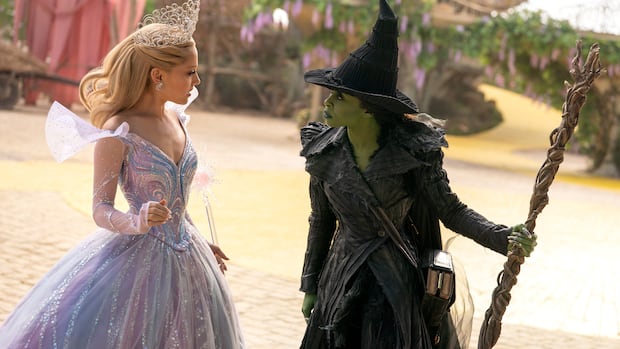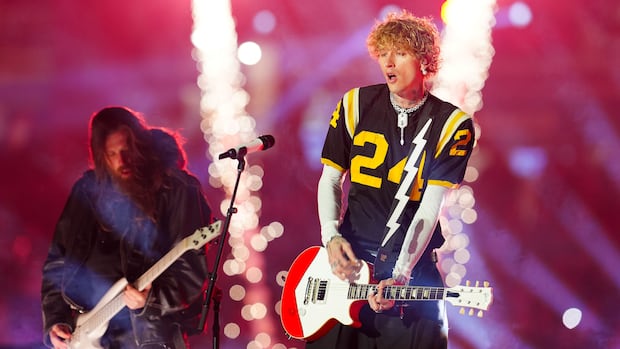There’s a story I like to tell about a high school trip I took to Broadway, barrelling through all the hits I’d never even heard of, let alone seen. But the highlight was definitely Wicked: the show-stopping, Tony-winning Wizard of Oz reinvention that had all the more musically well-heeled among us giddy with excitement.
So when we arrived at the show-stoppingest moment of all — wicked witch Elphaba lifting off the stage as she belted the lead track, Defying Gravity, simultaneously wrapping up the pre-Wizard of Oz backstory that turned her wicked and communicating to the audience her cathartic self-acceptance just before the curtains closed — I was floored.
So floored that I stood up, walked out and waited outside. And waited. Until 10 minutes later, when classmates came out to find and inform me it wasn’t, in fact, over. That was just the intermission.
Despite hearing all the songs any casual fan may be dimly aware of — and despite seeing the most technically impressive and finale-worthy moment in modern stage history — there was still somehow a whole hour of Wicked to go.
That's an obstacle Jon M. Chu’s feature adaptation now also has to grapple with: a problem endemic to the musical from its adaptation from Gregory Maguire's dourly political book into Winnie Holzman's seriously front-loaded Broadway spectacle. Not only do all the bangers reside in the first half, but so, too, do almost all the actually compelling parts of the story.
WATCH | Wicked: For Good trailer:
In Wicked: Part 1, which hit screens last year, that results in stars Cynthia Erivo and Ariana Grande being offered a meaty and focused first half, introducing and largely resolving its themes of innate goodness, self-determination and resisting fascism.
But that recommences in Wicked: For Good with a narrative that operates more as wink-and-a-nod fan fiction than it does as an interesting, self-contained story.
This isn’t to say the much anticipated followup to 2024’s Oscar-nominated first outing is a disappointment. At least not an abject one. It’s more or less competent, buoyed by undeniably incredible singing and framed by charmingly fantastical set design.
Back to the actionComing in not too long after the aforementioned show-stopping moment, we’re already well into the story of Elphaba (Erivo) when For Good picks up.
She is already alienated from the exclusive Ozian boarding school where she hoped to find acceptance. She has already encountered the civil rights plight of talking animals forced out of their positions in society by the mercurial, mysterious Wizard of Oz (Jeff Goldblum).
She has already struggled against and then found friendship with ditzy “good witch” Glinda (Grande). She has already chosen to fight against the duplicitous, conman Wizard in order to right the wrongs the dictatorial regime leader is surreptitiously instigating throughout the land.
And most importantly, the central theme of the story has been set up and cemented: that 1939's The Wizard of Oz’s supposed villain was really a misunderstood martyr, willing to accept hate in order to thanklessly save the world.
Understandably carried over from the first instalment are the performances. Erivo once again shows off her incredible vocal talents — perhaps the best of any performer in a modern movie musical. You can virtually feel every run inching her closer and closer to the Oscar that would see her attain well-earned Emmy, Grammy, Oscar and Tony-winning EGOT status.
And Grande exhibits perhaps the most fascinatingly layered showing by any actor coming to the role of Glinda. Needing to simultaneously balance the flighty, airheaded countenance of her character while also crooning emotionally conflicted, technically proficient and genuinely funny lyrics, her already near-impossible task only grew more difficult — and, therefore, more impressive — this time around.
If you need proof, simply look to how completely Michelle Yeoh struggles to do the same with her somehow uninterestingly campy Madame Morrible. It’s a flat, uncanny performance perhaps only rivalled by the uncanny CGI animals instantly dating the production any time they rear their unrealistically realistic, gimmicky heads.
 From left, Jeff Goldblum appears as the Wizard of Oz and Erivo as Elphaba. (Universal Studios)
From left, Jeff Goldblum appears as the Wizard of Oz and Erivo as Elphaba. (Universal Studios)They are really the symptoms of where Wicked: For Good fails to improve on source material that already does few favours.
To be fair, a movie musical will never offer the same suspension of disbelief or excusably and magically larger-than-life feelings that a stage play is naturally imbued with. The imagination required to make a theatre production's comparatively meagre effects, costumes and in-person setting all come together in your mind as a believable real and alive world is so effective a mental exercise that it literally birthed the concept of "the fourth wall."
In contrast, no matter how fantastical the story, a camera lens will always do more to highlight the real — and therefore (like the unfortunately realism-obsessed Dear Evan Hansen) work to emphasize what may have been excusably ridiculous in a musical's original medium. But still, there are other benefits.
That point isn't all that hard to prove, either. In best-picture winner Oliver!, the camera becomes part of the musical numbers in a way that fundamentally changes what is exciting about those numbers. Despite taking place in a restrictive and dingy attic room, the Dutch angles and intentionally jarring shot changes during I’d Do Anything turn a static dance scene into an energetic, unforgettable experience.
In The Sound of Music, wide vistas and scenic cuts allow Do Re Mi to both inextricably root the story in its Austrian setting while emphasizing the playful innocence of childhood — not to mention allow the intricate marionette sequence of Lonely Goatherd to take place at all.
Even Grease has its audience stumble through the Shake Shack alongside Danny and Sandy in You’re One That I Want — that is before the car takes off into the sky.
Lack of noveltyBut even more than the first instalment, Wicked: For Good eschews set pieces, large choreography or expansive numbers almost entirely. Instead, Chu seems obsessed with isolating his performers in awkward, CGI sets instead of using them to explore and interact with the world he's created — or giving annoying, extended closeups to live action Lion King-esque talking quadrupeds.
In fact, in the entirety of the film, there is likely only one scene that could be generously characterized as a choreographed number. And it abruptly ends to give Bowen Yang the opportunity to make a joke about his follicles.
This is on top of failings baked into Wicked's scaffolding from the get-go: a post-intermission storyline that essentially acts as an epilogue to itself. While the earlier portion focuses far more on an original, character-driven tale, the latter half is far more concerned with its occasionally hammy, half-believable tie-ins to the source text.
 From left, Michelle Yeoh appears as Madame Morrible and Grande as Glinda. (Universal Studios)
From left, Michelle Yeoh appears as Madame Morrible and Grande as Glinda. (Universal Studios)And however entertaining it is to learn exactly why the Cowardly Lion was so cowardly or why anyone cared about those slippers in the first place, jumping from Oz’s East to West in order to connect all the dots gets more in the way of a story than it does aid it. This is made even more obvious given the film is not simply separated by a 20-minute intermission, but a year-long gap for an entirely separate movie.
And it is also on top of a tone made decidedly more juvenile for movie audiences. Though catering to a younger crowd — never an outrightly bad thing — serves an additional purpose here. While it’s rarely a bad idea to teach children to question authority, distrust propaganda and have compassion for the downtrodden, Wicked: For Good teaching Gen Alpha these lessons now feels decidedly welcome.
But given the fact these lessons already came in the first half — along with all the best songs — it’s still hard to warrant walking back into the theatre for more.











